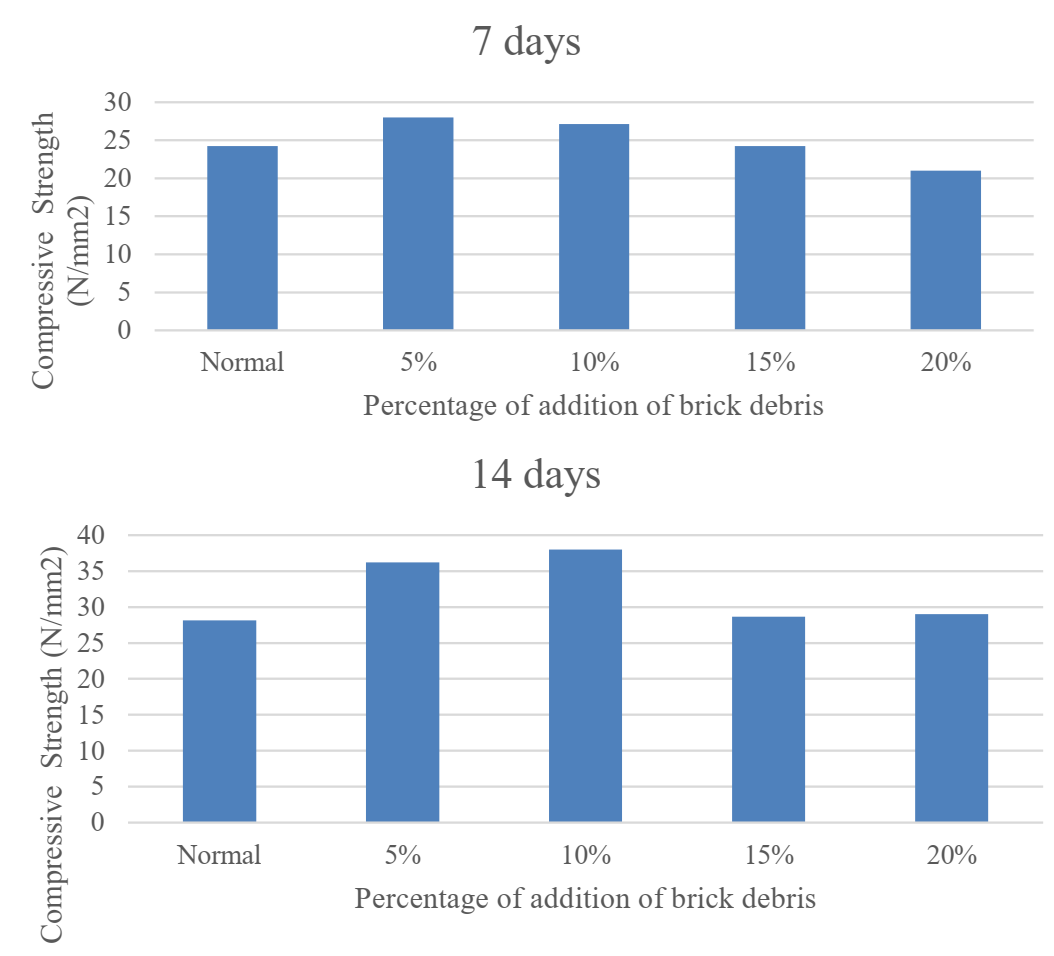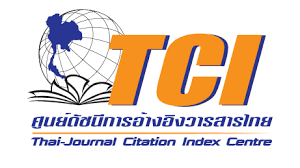A Comprehensive Review of Utilization of Construction and Demolition Waste as Fine Aggregate in Concrete
Keywords:
fine aggregates, construction demolition waste, dismantled building componentsAbstract
In the dynamic landscape of the Asian region, particularly in India, a lot of waste is produced through construction and demolition operations, such as masonry dust and concrete debris. Growing interest in recycling and reusing these materials has arisen in response to environmental concerns around trash disposal. One possible way to repurpose this material is to utilize Construction and Demolition Waste (CDW) as a fine aggregate in concrete. Most researchers studying natural fine aggregate and its properties also study query dust as a fine aggregate but very little research work for fine aggregate produced from CDW. This review paper intends to offer a thorough analysis of the literature in this area, emphasizing the components and mechanical characteristics of concrete containing CDW. The review begins by discussing the sources and composition of C&D waste, highlighting the diverse range of materials that can be repurposed, including crushed concrete, brick, ceramic, and asphalt. Various techniques for processing and preparing C&D waste for incorporation into concrete are explored, emphasizing the importance of proper sorting, cleaning, and size reduction to ensure compatibility and quality. Furthermore, this research evaluates the mechanical, durability, and sustainability aspects of concrete containing C&D waste as fine aggregate. Studies indicate that while including C&D waste may slightly reduce compressive strength, it often enhances flexural strength and mitigates the adverse effects of shrinkage and cracking. Additionally, concrete with C&D waste exhibits comparable or even superior durability performance, attributed to the pozzolanic and filler impact of the recycled materials.
References
M. B. Leite and V. M. Santana, “Evaluation of an experimental mix proportion study and production of concrete using fine recycled aggregate,” Journal of Building Engineering, vol. 21, 2019, doi: 10.1016/j.jobe.2018.10.016.
J. Sim and C. Park, “Compressive strength and resistance to chloride ion penetration and carbonation of recycled aggregate concrete with varying amounts of fly ash and fine recycled aggregate,” Waste Management, vol. 31, no. 11, 2011, doi: 10.1016/j.wasman.2011.06.014.
S. W. Tabsh and Y. Alhoubi, “Experimental Investigation of Recycled Fine Aggregate from Demolition Waste in Concrete,” Sustainability (Switzerland), vol. 14, no. 17, 2022, doi: 10.3390/su141710787.
I. Raini, R. Jabrane, L. Mesrar, and M. Akdim, “Evaluation of mortar properties by combining concrete and brick wastes as fine aggregate,” Case Studies in Construction Materials, vol. 13, 2020, doi: 10.1016/j.cscm. 2020.e00434.
S. Jesus, C. M. Pederneiras, C. B. Farinha, J. de Brito, and R. Veiga, “Reduction of the cement content by incorporation of fine recycled aggregates from construction and demolition waste in rendering mortars,” Infrastructures (Basel), vol. 6, no. 1, 2021, doi: 10.3390/infrastructures6010011.
A. S. Patil, A. S. Kurzekar, and P. Fulzele, “Behaviour of H sections with slender flange built upsection in pre-engineering building,” Journal of Advanced Research in Dynamical and Control Systems, vol. 11, no. 8 Special Issue, 2019.
M. Neethu Susan and S. Usha, “Effects of copper slag as a partial replacement for fine aggregate in geopolymer Concrete,” International Conference on Emerging Trends in Engineering & Management, vol. 5, no. 03, 2016.
L. A. López Ruiz, X. Roca Ramón, and S. Gassó Domingo, “The circular economy in the construction and demolition waste sector – A review and an integrative model approach,” Journal of Cleaner Production, vol. 248. 2020. doi: 10.1016/j.jclepro.2019.119238.
M. Alhawat, A. Ashour, G. Yildirim, A. Aldemir, and M. Sahmaran, “Properties of geopolymers sourced from construction and demolition waste: A review,” Journal of Building Engineering, vol. 50. 2022. doi: 10.1016/j.jobe.2022.104104.
J. L. Gálvez-Martos, D. Styles, H. Schoenberger, and B. Zeschmar-Lahl, “Construction and demolition waste best management practice in Europe,” Resour Conserv Recycl, vol. 136, 2018, doi: 10.1016/j.resconrec.2018.04.016.
A. Akhtar and A. K. Sarmah, “Construction and demolition waste generation and properties of recycled aggregate concrete: A global perspective,” J Clean Prod, vol. 186, 2018, doi: 10.1016/j.jclepro.2018.03.085.
K. Kabirifar, M. Mojtahedi, C. Changxin Wang, and T. Vivian W.Y., “A conceptual foundation for effective construction and demolition waste management,” Cleaner Engineering and Technology, vol. 1. 2020. doi: 10.1016/j.clet.2020.100019.
K. R. A. Nunes and C. F. Mahler, “Comparison of construction and demolition waste management between Brazil, European Union, and USA,” Waste Management and Research, vol. 38, no. 4, 2020, doi: 10.1177/0734242X20902814.
S. H. Ghaffar, M. Burman, and N. Braimah, “Pathways to circular construction: An integrated management of construction and demolition waste for resource recovery,” J Clean Prod, vol. 244, 2020, doi: 10.1016/j.jclepro.2019.118710.
M. S. Aslam, B. Huang, and L. Cui, “Review of construction and demolition waste management in China and USA,” Journal of Environmental Management, vol. 264. 2020. doi 10.1016/j.jenvman.2020.110445.
R. S. Yetekar and A. S. Kurzekar, “Parametric study of responses of RCC building on sloping ground for response reduction factor with vertical discontinuity - A review,” in AIP Conference Proceedings, 2023. doi: 10.1063/5.0126207.
C. Zhang, M. Hu, F. Di Maio, B. Sprecher, X. Yang, and A. Tucker, “An overview of the waste hierarchy framework for analyzing the circularity in construction and demolition waste management in Europe,” Science of the Total Environment, vol. 803. 2022. doi: 10.1016/j.scitotenv.2021.149892.
U. A. Umar, N. Shafiq, and F. A. Ahmad, “A case study on the effective implementation of the reuse and recycling of construction & demolition waste management practices in Malaysia,” Ain Shams Engineering Journal, vol. 12, no. 1, 2021, doi: 10.1016/j.asej.2020.07.005.
A. Rabbani, “Utilization of Solid Wastes for the Stabilization of Expansive Soil: A Review,” Int J Res Appl Sci Eng Technol, vol. 7, no. 10, 2019, doi: 10.22214/ijraset.2019.10035.
B. J. S. Varaprasad, J. J. Reddy, T. Rajesh, Y. Y. Kumar, and K. R. M. Reddy, “Soil improvement by fine fraction residue from recycling construction and demolition waste,” International Journal of Scientific and Technology Research, vol. 8, no. 10, 2019.
Y. C. Jang and T. G. Townsend, “Occurrence of organic pollutants in recovered soil fines from construction and demolition waste,” Waste Management, vol. 21, no. 8, 2001, doi: 10.1016/S0956-053X(01)00007-1.
Abhishek, R. K. Sharma, and A. Bhardwaj, “Effect of construction demolition and glass waste on stabilization of clayey soil,” in Lecture Notes in Civil Engineering, 2019. doi: 10.1007/978-3-030-02707-0_12.
S. P. Kanniyappan, S. Balakumaran, R. G. D. Kumar, and C. Lavanya, “Soil Stabilization Using Construction and Demolition Waste in Road Construction,” Pramana Research Journal, vol. 9, no. 6, 2019.
S. P. Sangeetha, Z. T. Chophi, P. Venkatesh, and M. Fahad, “Use of Recycled Construction and Demolition (C&D) Wastes in Soil Stabilization,” Nature Environment and Pollution Technology, vol. 21, no. 2, 2022, doi: 10.46488/NEPT.2022.v21i02.034.
A. Seco, F. Ramírez, L. Miqueleiz, and B. García, “Stabilization of expansive soils for use in construction,” Appl Clay Sci, vol. 51, no. 3, 2011, doi: 10.1016/j.clay.2010.12.027.
P. Kumar, V. Shukla, and K. Markal, “Stabilization of Expansive Soils Using Construction and Demolition Waste,” International Research Journal of Engineering and Technology, vol. 5, no. 6, 2018.
N. Singh, T. Singh, M. Kumar, A. Singh, and P. Kumar, “Investigating the fresh state performance of concrete containing iron slag and recycled concrete aggregates,” Mater Today Proc, vol. 65, 2022, doi: 10.1016/j.matpr.2022.04.462.
Y. Qin, J. Chen, Z. Li, and Y. Zhang, “The Mechanical Properties of Recycled Coarse Aggregate Concrete with Lithium Slag,” Advances in Materials Science and Engineering, vol. 2019, 2019, doi: 10.1155/2019/8974625.
P. Saravanakumar and G. Dhinakaran, “Mechanical and durability properties of slag based recycled aggregate concrete,” Iranian Journal of Science and Technology - Transactions of Civil Engineering, vol. 39, no. C2, 2015.
P. Saravanakumar, D. Manoj, and S. Jagan, “Properties of concrete having treated recycled coarse aggregate and slag,” Revista de la Construccion, vol. 20, no. 2, 2021, doi: 10.7764/RDLC.20.2.249.
N. Singh, N. Ankur, T. Singh, M. Kumar, A. Singh, and P. Kumar, “NON-DESTRUCTIVE EVALUATION OF IRON SLAG CONCRETE CONTAINING RECYCLED CONCRETE AGGREGATES,” Indian Concrete Journal, vol. 96, no. 11, 2022.
B. Johny, M. V. George, and E. John, “Study of properties of sustainable concrete using slag and recycled concrete aggregate,” International Journal of Engineering Research and Science & Technology, vol. 3, no. 1, 2016.
A. A. Sharba, “The Efficiency of Steel Slag and Recycled Concrete Aggregate on the Strength Properties of Concrete,” KSCE Journal of Civil Engineering, vol. 23, no. 11, 2019, doi: 10.1007/s12205-019-0700-3.
P. O. Awoyera, O. E. Babalola, and O. G. Aluko, “The use of slags in recycled aggregate concrete,” in The Structural Integrity of Recycled Aggregate Concrete Produced With Fillers and Pozzolans, 2021. doi: 10.1016/B978-0-12-824105-9.00009-3.
H. El-Hassan, P. Kianmehr, and S. Zouaoui, “Properties of pervious concrete incorporating recycled concrete aggregates and slag,” Constr Build Mater, vol. 212, 2019, doi: 10.1016/j.conbuildmat.2019.03.325.
J. Vijayaraghavan, A. B. Jude, and J. Thivya, “Effect of copper slag, iron slag and recycled concrete aggregate on the mechanical properties of concrete,” Resources Policy, vol. 53, 2017, doi: 10.1016/j.resourpol.2017.06.012.
J. An, J. Eun, and B. Nam, “Leaching Behavior of Concrete Containing Municipal Solid Waste Incineration Bottom Ash,” 2017. doi: 10.1061/9780784480441.035.
S. Vichaphund, S. Jiemsirilers, and P. Thavorniti, “Sintering of Municipal Solid Waste Incineration Bottom Ash,” Journal of Engineering Science, vol. 8, 2012.
M. Saad et al., “Manufacturing of Lightweight Aggregates from Municipal Solid Waste Incineration Bottom Ash and their Impacts on Concrete Properties,” 2nd International Congress on Engineering and Architecture, July, 2019.
P. Shen, H. Zheng, J. Lu, and C. S. Poon, “Utilization of municipal solid waste incineration bottom ash (IBA) aggregates in high-strength pervious concrete,” Resour Conserv Recycl, vol. 174, 2021, doi: 10.1016/j.resconrec.2021.105736.
J. W. Ahn, “Characteristics of the bottom ash in municipal solid waste incineration ash,” in Proceedings of the Fourth International Conference on Materials Engineering for Resources, 2001.
A. Chowaniec, Ł. Sadowski, and A. Żak, “The chemical and microstructural analysis of the adhesive properties of epoxy resin coatings modified using waste glass powder,” Appl Surf Sci, vol. 504, 2020, doi: 10.1016/j.apsusc.2019.144373.
S. Rahman and M. N. Uddin, “Experimental investigation of concrete with glass powder as partial replacement of cement,” Civil Engineering and Architecture, vol. 6, no. 3, 2018, doi: 10.13189/cea.2018.060304.
E. Güneyisi, M. Gesoʇlu, E. Booya, and K. Mermerdaş, “Strength and permeability properties of self-compacting concrete with cold bonded fly ash lightweight aggregate,” Constr Build Mater, vol. 74, 2015, doi: 10.1016/j.conbuildmat.2014.10.032.
T. Bilir, O. Gencel, and I. B. Topcu, “Properties of mortars with fly ash as fine aggregate,” Constr Build Mater, vol. 93, 2015, doi: 10.1016/j.conbuildmat.2015.05.095.
P. Rovnaník and K. Šafránková, “Thermal behavior of metakaolin/fly ash geopolymers with chamotte aggregate,” Materials, vol. 9, no. 7, 2016, doi: 10.3390/ma9070535.
F. U. A. Shaikh, “Mechanical and durability properties of fly ash geopolymer concrete containing recycled coarse aggregates,” International Journal of Sustainable Built Environment, vol. 5, no. 2, 2016, doi: 10.1016/j.ijsbe.2016.05.009.
G. B. Singh, “Artificial Aggregate Production from Fly Ash,” Building Materials, vol., no., 2016.
P. P. Kumar and P. Rama Mohan Rao, “Packing density of self-compacting concrete using normal and lightweight aggregates,” International Journal of Civil Engineering and Technology, vol. 8, no. 4, 2017.
M. S. Nadesan and P. Dinakar, “Mix design and properties of fly ash waste lightweight aggregates in structural lightweight concrete,” Case Studies in Construction Materials, vol. 7, 2017, doi: 10.1016/j.cscm.2017.09.005.
M. P. Naveena, G. Narayana, and R. Ravichandra, “Study on strength and durability properties of fly ash aggregates concrete,” Indian Concrete Journal, vol. 91, no. 7, 2017.
S. N. Vaidhyanathan, R. Thenmozhi, and B. R. Babu, “Experimental Study on the Mechanical Properties of Light Weight Fly Ash Aggregate Concrete Reinforced with Steel Fiber,” SSRG International Journal of Civil Engineering, no. Special Issue, 2017.
P. Nuaklong, A. Wongsa, V. Sata, K. Boonserm, J. Sanjayan, and P. Chindaprasirt, “Properties of high-calcium and low-calcium fly ash combination geopolymer mortar containing recycled aggregate,” Heliyon, vol. 5, no. 9, 2019, doi: 10.1016/j.heliyon.2019.e02513.
K. N. Shivaprasad and B. B. Das, “Determination of optimized geopolymerization factors on the properties of pelletized fly ash aggregates,” Constr Build Mater, vol. 163, 2018, doi: 10.1016/j.conbuildmat.2017.12.038.
H. Yıldırım and T. Özturan, “Impact resistance of concrete produced with plain and reinforced cold-bonded fly ash aggregates,” Journal of Building Engineering, vol. 42, 2021, doi: 10.1016/j.jobe.2021.102875.
M. Shi, T. C. Ling, B. Gan, and M. Z. Guo, “Turning concrete waste powder into carbonated artificial aggregates,” Constr Build Mater, vol. 199, pp. 178–184, Feb. 2019, doi: 10.1016/j.conbuildmat.2018.12.021.
IS 2386: Part 5, “Methods of test for aggregates for concrete (Soundness),” Indian Standard, vol. Reaffirmed, no. 2002, 1963.
Bureau of Indian Standards (BIS), “IS 2386 ( Part II ) - 1963 : Methods of test for aggregates for concrete,” Indian Standards, 1963.
P. N. Ojha, B. Singh, S. Prakash, P. Singh, M. K. Mandre, and S. Kumar, “Effect of high ratio fly ash on roller compacted concrete for dam construction,” Research on Engineering Structures and Materials, vol. 8, no. 2, 2022, doi: 10.17515/resm2022.374ma1216.
S. Z. Ashiq, A. Akbar, K. Farooq, and H. Mujtaba, “Sustainable improvement in engineering behavior of Siwalik Clay using industrial waste glass powder as an additive,” Case Studies in Construction Materials, vol. 16, 2022, doi: 10.1016/j.cscm.2022.e00883.
M. Vafaei and A. Allahverdi, “High strength geopolymer binder based on waste-glass powder,” Advanced Powder Technology, vol. 28, no. 1, 2017, doi: 10.1016/j.apt.2016.09.034.
S. Ibrahim and A. Meawad, “Towards green concrete: Study the role of waste glass powder on cement/superplasticizer compatibility,” Journal of Building Engineering, vol. 47, 2022, doi: 10.1016/j.jobe.2021.103751.
Y. Du, W. Yang, Y. Ge, S. Wang, and P. Liu, “Thermal conductivity of cement paste containing waste glass powder, metakaolin and limestone filler as supplementary cementitious material,” J Clean Prod, vol. 287, 2021, doi: 10.1016/j.jclepro.2020.125018.
X. Gao, Q. Yu, X. S. Li, and Y. Yuan, “Assessing the modification efficiency of waste glass powder in hydraulic construction materials,” Constr Build Mater, vol. 263, 2020, doi: 10.1016/j.conbuildmat.2020.120111.
Atul S. Kurzekar, Dr. K. Ravi “An Experimental Investigation on Fine Crushed Recycled Construction Dismantling Waste & Course Fly Ash Aggregate Geopolymer Concrete,” International Journal of Grid and Distributed Computing, vol. 14, no. 1, pp. 404-410, 2021.
Atul S. Kurzekar, Pranita Fating, Bhavesh Mishra, Vikram ingle “An Investigation on Geopolymer Concrete: A Review” International Journal of Disaster Recovery and Business Continuity, vol.12, no.1, 2021.
A. S. Kurzekar1, M. Wararkar, G. Shelke, and H. Tekade, “An Investigation on Mix Design & Strength Issue Of Geopolymer Concrete,” Vidyabharati International Interdisciplinary Research Journal (Special Issue), pp.1509-1514.
U. P. Waghe, Atul S. Kurzekar, D. Lambat, R. Badwaik, D. Bode, H. Devtale, S. Yeskar and S. Chavhan, “To Study the Effects of Alkali Addition on the Different Physical & Mechanical Properties of Fly Ash Based Aggregates” Journal of Survey in Fisheries Sciences, vol. 10, no. 2S, pp. 155-160, 2023.

Downloads
Published
How to Cite
Issue
Section
License

This work is licensed under a Creative Commons Attribution-NonCommercial-NoDerivatives 4.0 International License.








